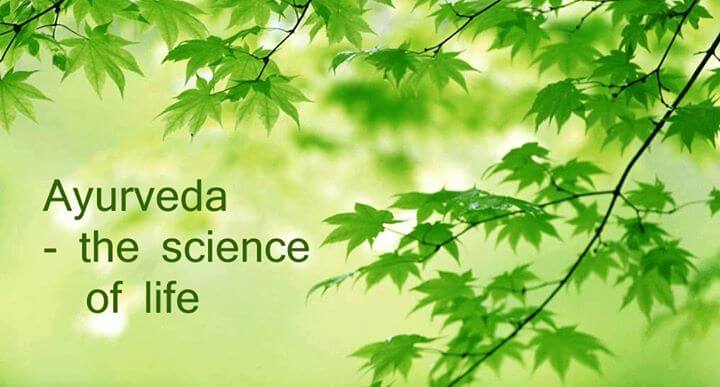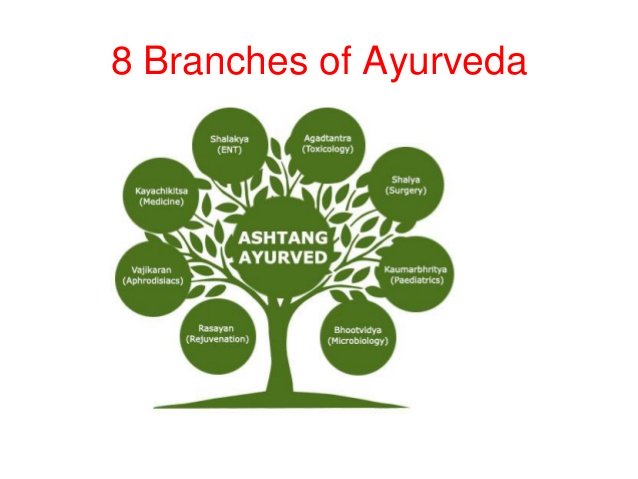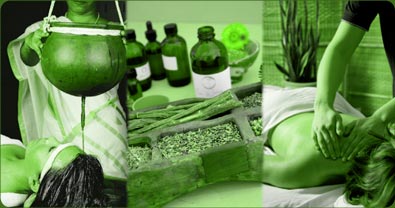Ayurveda in India
- Home
- Ayurveda and tridoshas
Ayurveda is a fascinating subject to read, understand and to practice for a healthy lifestyle. As the civilisation advanced and man discovered new gadgets the pattern of diseases also changed and even the medical field also changed for good.
Ayurveda gives great importance for the prevention of diseases and to maintain healthy life by using of natural herbs and nature available medicines. Every person has different combination of doshas known as Vata, Pita and Kapha. If any one of the dosha accumulates in our body then the person starts suffering from different health problems. There are many factors both internal and external which are the causes for the imbalance of any dosha.
According to Ayurveda the body, mind and the consciousness of a person work together to maintain the balance of the body. If any one dosha gets imbalanced then the person suffers from health disorders. Ayurvedic system originated in India and it is more than 5,000 years old
History of Ayurveda
Ayurveda is an ancient medical system from India. It is derived from the Sanskrit word ‘ayus’ means life and ‘ved’ means knowledge. It offers a unique blend of medicine to cure many major and minor diseases. Even though Ayurveda has its origin in India the medicine has gained worldwide prominence.
The origin of Ayurveda dates way back to Vedas. Historians believe that Ayurveda stems its origin from Atharvaveda. Many hymns in Atharveda mentions about the diseases and treatment for it. The fundamentals of Ayurvedic medicine has not changed from time immemorial. It is believed that the originators of Ayurvedic medicine did not base their practice on experiments hence there are no records in medical filed.
The earliest codified document of Ayurveda is Charaka Samhitha. Another document is Sushruta Samhita which is believed to be descended from Dhanvantri and concentrate mainly on internal medicine and surgery.
The development of Ayurveda started during the period of Agnivesa. The above Samhithas are written by him. However it is not clear the exact period when Agnivesa lived. The Charaka Samhitha is partly written in verse and partly in hymns. Agnivesa under the guidance of Atreya wrote the treatise or codified document of Charaka, but however it gained popularity only when charaka revised the treatise later which came to be known as Charaka Samhitha. Charaka Samhitha explains the logic and the system behind Ayurveda. Charaka Samhitha consists of 120 chapters and 8,400verses. This deals with ‘sutra stana’ which contains the basic principles of Ayurveda. The basic 8 chapters of Charaka Samhitha are:
Charaka Samhitha mainly focuses on healing the body, mind and soul of a patient in a minimally invasive manner. Most of the medicines are made from the plants and mineral salts (naturally occurring substances) and the timing and the collection of medicinal plant is very important.
The author of the Sushruta Samhitha is an old Indian physician called as Sushruta. The treatise has undergone many changes unlike the original one which mainly dealt with surgery. Sushruta Samhitha was translated into Arabic before 8th century. It is believed that Sushruta was the first surgeon to do plastic surgery. It is commonly understood that the plastic surgery is a new concept, however the base lies way back 4000 years BC which is during Vedic period. It not only contains teachings on plastic surgery but also contains teachings on various other surgeries. It is believed that Sushruta practiced mainly on the banks of river Ganga which is a home for Buddhism as well as to Ayurveda. The Tridosha of Ayurveda are vata, pitta and Kapha dosha which mainly deals with different elements.
Five Basic elements and Doshas in Ayurveda
Ayurveda also recognises twenty gunas which is present in every substance. According to Ayurveda every substance does not have to include all the ten gunas. Each substance or matter has its own guna which distinguishes it from all other substance. They are recognised in ten opposite pairs like hot-cold, heavy-light, dull-sharp, oily-dry, smooth-rough, soft-hard, minute-gross, stable-mobile, liquid-viscous and dull-sharp.
Vata, pitta and Kapha are together known as Dosha. Dosha is one of the fundamental concept to understand in Ayurveda. A dosha is one of the three most important substance that are present in human body. They are very important to determine growth, ageing, health and disease of the person. Since all the three doshas are important to our body it can be said that no one is superior to the other. All the doshas are found in everyone but in different proportions. The basic concept of the Ayurveda is to maintain a balance of all the three doshas in our body. Each dosha is characterised by different collection of qualities like
Vata is characterised by dry, light, cold, rough, Subtle, mobile and clear
Pitta is characterised by hot, Sharp, light, Liquid and oily
Kapha is characterised by heavy, slow, cool, dense, soft, stable, gross and lubrication.
A further study of these doshas can be done in my other pages.
Eight branches of Ayurveda
Branches of Ayurveda
The main 8 branches of Ayurveda which deals with different diseases are
- Internal Medicine (Káyachikitsá) This is related to the soul, mind, and body
- Ears, Nose, and Throat (shálákya Tantra)
- Toxicology (Vishagara–vairodh Tantra)
- Pediatrics (Kaumára bhritya)
- Surgery (Shalyá Tantra)
- Psychiatry (Bhúta Vidyá)
- Aphrodisiacs (Vájikarana)
- Rejuvenation (Rasáyana
Kayachiktsa: It is the first branch of Ayurveda which deals with common diseases like arthritis, diabetes, skin diseases. The scripts of Kayachiktsa can be traced in Charaka Samhitha. The word Kayachiktsa means ‘kaya’ means Body and ‘chiktsa’ means treatment. As per Kayachitktsa most of the diseases are caused by the imbalance in vata, pitta and kappa in the body of a person. In Kayachiktsa the medicine goes deep into the roots of the diseases and heals it. In this form of treatment, they use several natural and herbal therapies which have no side effects. It has been successfully implemented in curing many diseases. One of the most important methods of treatment in this is pancha karma method. In this method body is cleansed by reversing the disease path. Another important method of treatment is kaya kalpa or rejuvenation.
Shalakya Tantra: this is the second branch of Ayurveda where it deals with diseases pertaining to upper part of the body like eyes, ears, nose throat. Further branches of shalakya tantra includes for eye is called as netra chikitsa, karna chikitsa is for ear, Nasa chiktsa for nose and Mukh Chitksa for throat. Shalakya tantra uses different methods to treat different ailments. The scripture are found in Sushruta Samhitha. In Sushruta Samhitha 72 types of various diseases relating to eyes have been discussed. Other than eyes 25 of ears, 18 of nose, 11 relating to lips, 23 of teeth and 6 of tongue have been discussed. Shalakya tantra has remedy for all these diseases.
Vishagara–vairodh Tantra: This is the third branch of Auyurveda which deals with toxicology. This branch includes pollution from air and water. It also includes toxins from animals, vegetables and epidemics.
Kaumára bhritya: This is the fourth branch of Auyurveda. It deals with diseases pertaining to infants. Kaumarabhritya literary means nurturing a baby from pregnancy to adolescence. It deals with various infections during childhood and the remedies to treat these infections. It also deals with the benefits of the breast milk. Auyurveda insists on breast milk, however the quality of breast milk is important. Hence there are certain ‘do’ and ‘do not’ prescribed for the food intake of lactating mothers.
Shalyá Tantra: This is an important branch of Ayurveda which deals with surgeries for certain diseases. Shalya tantra became quiet famous because it gave fast relief. It mainly dealt with bladder stones and intestinal problems. The instruments used mainly were made from stone, wood, broad leaves. One of the limitations of Shalya tantra was lack of proper aseptic precautions. In addition to this, the instruments in use were crude (because of the materials used) and their use was painful.
Bhúta Vidyá: In this
branch of Asthang Ayurveda which deals with diseases of mind and diseases that
do not follow Tridosha. Tridosha defines the
three fundamental energies or principles which govern the function of our
bodies on the physical and emotional level. The three energies are known a
vata, pitta, and kapha. Each individual
has a unique balance of all three of these energies. It mainly deals with insomania, depression,
epilepsy and insanity.
Vájikarana: This branch of Ayurveda deals with infertility and spiritual development that is to transmute sexual energy into spiritual energy. ‘vaji’ means horse and ‘karana’ means to follow. This branch helps in increasing the fertility related issues and conversion of the sexual energy into spiritual energy. This branch explains for producing healthy progeny for the creation of better society.
Rasáyana: Prevention and longevity are discussed in this branch. In order to develop longevity ethics and virtuous living must be embraced.
Update on coronavirus in India
Affiliate Disclosure:
If you make any purchase via a link on this site, I may receive a small commission with no added cost to you.





